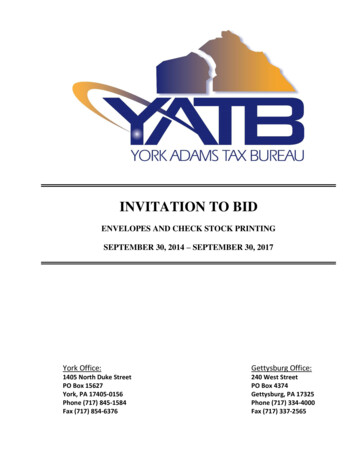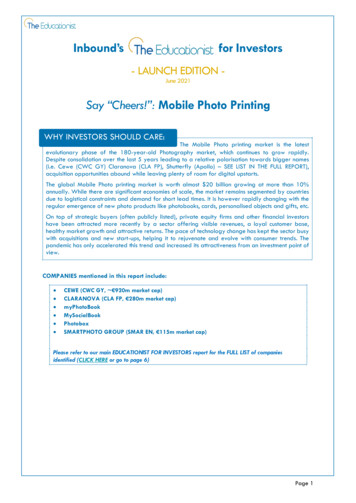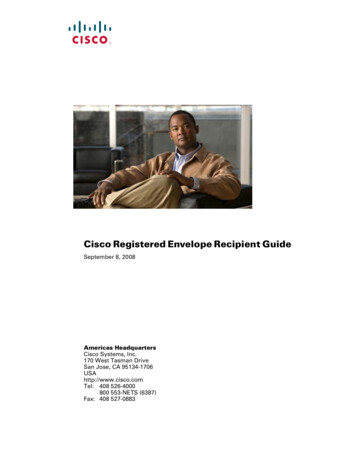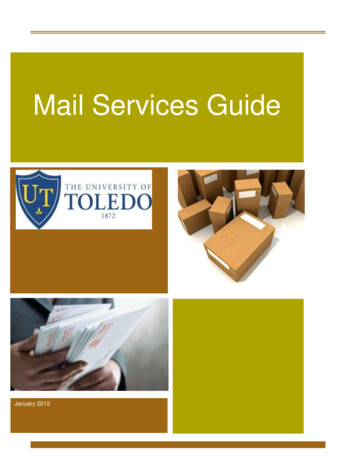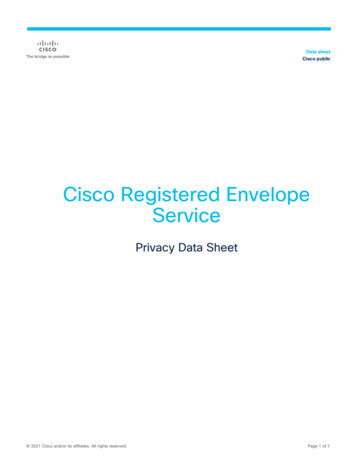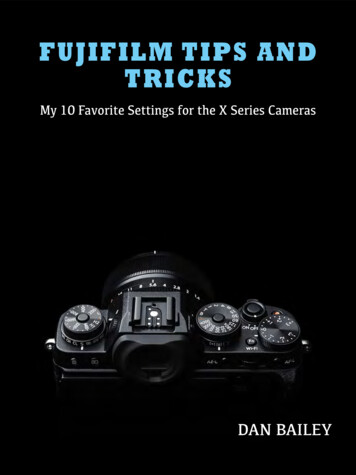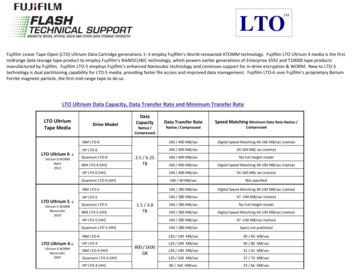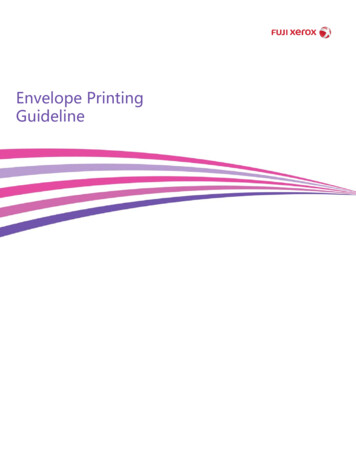
Transcription
Envelope PrintingGuideline
1Envelope Printing TipsThe media selected for a specific print job plays an important role in delivering highquality results. In addition to the general quality of the media (texture, weight,composition), the physical design and construction of an envelope must be taken intoconsideration in striving to achieve optimum print quality.This document highlights common envelope styles and the challenges imposed.In some cases, the envelope’s composition and construction may limit the type of graphicartwork and/or the positioning of the content for that envelope style. Some envelopesshould be avoided altogether.Envelope Styles and ConsiderationsExamples are given for standard business envelope (Com-10) but the details coveredapply to other sizes.Side SeamsGenerally, the preferred envelope design for laser-type printing. Provides a large surfacearea uninterrupted with folds and seams.Diagonal SeamsAvailable in a wide variety of designs and fold patterns. Economical.WindowWindow envelopes must be “laser” compatible. The clear window must be able towithstand the high temperature of the printer’s fuser. Misuse will damage the fuser.For more information about Self Help, please visit Fuji Xerox website.
2Peal and Stick SealingOften includes premium quality media and good results.2-sided Adhesive Pressure SealDO NOT USEFor more information about Self Help, please visit Fuji Xerox website.
3Envelope Design ConsiderationsWhen selecting envelops, be aware that the physical design and quality of the envelopemay impose limitations on print quality and/or handling.Envelopes can be a challenge because of the multiple surfaces passing through the printer.For example, most envelopes require the printer to transfer toner onto a surface that has 2,3 and 4 layers of thickness.A typical envelope will have 4 layers of media in multiple locations when it’s flaps areclosed. In the illustration below, the blue circles indicate the location where 4 layers ofmedia overlap on two different envelop designs.Generally, the printer is capable of transferring toner on thick media. However, testinghas found that the location of the overlapping layers may create pressure points in onearea which yield a void of pressure in other areas of the envelope. This is illustrated inthe next section.Testing and Selecting EnvelopesKnowing the limits of an envelope is helpful in paring the right envelops with a client’srequirements. A simple test using Microsoft Word may help to identify envelopes thatcould be problematic.Basic Steps for Creating Test File:Open MS Word and create a new document.Change the paper size to match your envelopeClick on: File - Page Setup - Paper (tab). In this case Com-10 wasselected as the paper size. However, a custom size can also be specified.On the “Margins” tab select “Landscape” and close page setup.For more information about Self Help, please visit Fuji Xerox website.
4Draw a rectangle allowing 0.3 inch for the margins.Fill the rectangle with a 75% pattern. And Select a foreground color such as red.The test page created in MS Word was applied to the envelopes shown in the photosbelow. In the first set of photos the test pattern highlights an area on the envelope wheretoner did not transfer.The second set of photos shows a differently designed diagonal-fold envelope thatproduces a uniform fill across the envelope.For more information about Self Help, please visit Fuji Xerox website.
5Knowing ahead of time the strengths of each envelope can be helpful in matching a job toan envelope or knowing when to change the content and/or the layout of a print job.The smaller circles highlight the areas with4-layers of paper when the flap is closed.This envelop design has a tendency toproduce a void of toner on the left side of theprinted envelope. The area lacking toner isin-line with the area of the envelope where4-layers of media overlap.The images above illustrate that the pressure points of a particular envelope design mayinterfere with the printer’s ability to maintain uniform contact between the printer’simage drums and the surface of the envelope.Keep in mind, that an envelope design that has a weakness in one area may be acceptablefor jobs that do not use that area. Testing and experience will help to quickly identify thebest envelope for a given job or layout. Some jobs may require you to use a specificenvelope in order to reliably place content in specific locations or to achieve consistentquality.For more information about Self Help, please visit Fuji Xerox website.
6General Recommendations:Test envelopes before purchasing large quantities.When possible, use envelopes designed and recommended for laser printers.Envelopes should be free from twist, curl or other deformations. Glue mustremain intact when subjected to hot roll pressure fusing used by this type ofprinter.Windowed envelopes must be designed for higher fusing temperatures utilized bylaser printers. Use of inappropriate media may damage the printer’s fuser andimaging components.The preferred method for loading envelopes: Load envelopes face-up, with theflap down and closed, and the flap edge entering the printer first.The printer offers a range of media settings that influence image transfer strength,speed, and fuser temperature. In many cases, print quality can be improved byadjusting media settings. Heavier media settings may help to ensure toner isbeing pulled onto the envelope in critical areas, while lighter settings may help tominimize glossy hotspots.In some cases, the layout design or graphic artwork or may need to be adjusted toin order to deliver good results on a specific envelope. Or, some jobs will need tobe paired with a specific envelope style if the client’s artwork can not be adjusted.In some cases, the placement of the return address and/or logo may have to beadjusted to optimize image transfer along the edge of the envelope or where theenvelop transitions from 2 to 3 layers of media.Avoid printing with the envelope flap open. Heat and humidity may result in abuild-up of adhesive on printer components and contribute to frequent jams anddegraded print quality.Watch out for envelopes with a thick layer of adhesive or an uneven build-up ofglue along the edges of the flap.Do not use pressure seal envelopes that must be printed with the flap open andexpose the printer to gummy adhesive.Store envelopes in a dry area. Excess moisture released while printing (fusing)will tend to seal envelopes. A controlled environment may be required ifhumidity levels are high.Small pockets of air trapped inside an envelope can also interfere with theprinting process resulting in random voids. Some envelope designs are moreprone to trapping air than others. Flattening envelopes prior to printing may help.Be sure to incorporate your client’s requirements when selecting envelopes.Some customers may require an envelope that is conducive to a specificapplication, such as automated insertion.For more information about Self Help, please visit Fuji Xerox website.
Examples are given for standard business envelope (Com-10) but the details covered apply to other sizes. Side Seams Generally, the preferred envelope design for laser-type printing. Provides a large surface area uninterrupted with folds and seams. Diagonal Seams Available in a wide variety of designs and fold patterns. Economical.

